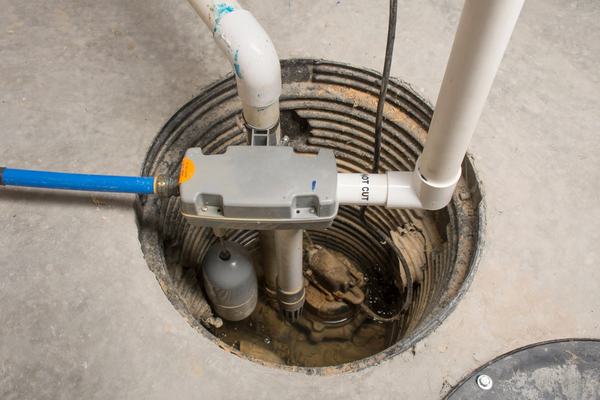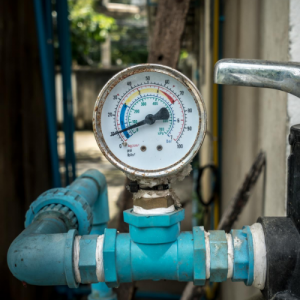Speedy Fixes for Addressing Low Water Pressure in Your Home
Speedy Fixes for Addressing Low Water Pressure in Your Home
Blog Article
Were you on the lookout for know-how around 9 Reasons for Low Water Pressure in Your House?

Low tide pressure in your house can be a frustrating issue, impacting every little thing from bathing to washing dishes. If you're experiencing weak water circulation, there are a number of feasible causes and options to explore. In this overview, we'll talk about typical reasons for low water stress and sensible steps to deal with the issue properly.
Introduction to Low Tide Pressure
Low tide stress occurs when the flow of water from your faucets, showers, and other components is weaker than common. This can make daily jobs a lot more challenging and less effective. Recognizing the reasons for low tide pressure is crucial to locating the best remedy.
Typical Reasons For Low Tide Pressure
Pipe Obstructions
In time, pipes can end up being obstructed with natural resource, sediment, or debris, restricting the circulation of water. This is a common concern in older homes with galvanized steel pipes.
Corrosion
Deterioration within pipelines can cause leakages and reduced water pressure. Corrosion accumulation can constrict water circulation, especially in aging plumbing systems.
Faulty Stress Regulators
Stress regulators are in charge of preserving regular water stress in your house. If they malfunction, it can result in low tide stress or irregular flow throughout your house.
Metropolitan Water Issues
In some cases, the issue exists outside your home. Metropolitan water system problems, such as main line leakages or maintenance work, can temporarily lower water stress in your location.
How to Identify Low Tide Stress
Examining Taps and Fixtures
Begin by testing the water stress at various taps and fixtures throughout your home. If the problem is separated to particular locations, it may show local problems.
Evaluating Pipes
Inspect visible pipes for signs of leakages, deterioration, or obstructions. Take notice of any type of uncommon audios, such as knocking or rattling pipelines, which could show concerns within the plumbing system.
Consulting with a Plumber
If you're unable to pinpoint the reason for low tide stress, think about hiring a professional plumber to perform a complete assessment. They can recognize underlying problems and suggest ideal options.
Do It Yourself Solutions to Repair Low Water Stress
Cleaning Up Aerators and Showerheads
Natural resources can gather in aerators and showerheads, minimizing water circulation. Eliminate and clean these parts frequently to boost water pressure.
Flushing Hot Water Heater
Debris build-up in the water heater can restrict flow and minimize efficiency. Purging the tank periodically helps get rid of debris and preserve optimum efficiency.
Checking Stress Regulator
Guarantee that the pressure regulatory authority is working properly. Adjusting or replacing the regulatory authority can aid recover appropriate water pressure throughout your home.
Clearing Up Clogs in Water Lines
For small clogs, try utilizing a plumbing snake or chemical drainpipe cleaner to clear blockages in pipelines. Beware when utilizing chemicals and adhere to safety standards.
When to Call an Expert Plumber
If do it yourself efforts fall short to settle the issue or if you suspect significant plumbing problems, it's ideal to look for assistance from an accredited plumber. They have the expertise and tools to attend to complex issues securely and effectively.
Preventive Measures to Maintain Water Stress
Regular Upkeep
Set up regular upkeep for your plumbing system to stop issues such as deterioration, leakages, and blockages. Attending to small troubles early can aid prevent even more substantial repairs in the future.
Setting Up a Pressure Booster
Take into consideration setting up a stress booster pump to boost water stress in areas with continually reduced circulation. This can be especially beneficial for multi-story homes or homes with high-demand components.
Surveillance Water Usage
Bear in mind water use practices and prevent overtaxing the plumbing system. Simple changes, such as incredible showers and laundry tons, can assist preserve appropriate water pressure.
Final thought
Taking care of low tide stress can be discouraging, however recognizing the underlying reasons and carrying out proper services can restore optimum flow throughout your home. Whether it's cleaning aerators, inspecting pipelines, or seeking advice from a plumber, taking proactive steps can guarantee a steady supply of water for your everyday requirements.
FOUR WAYS TO FIX LOW WATER PRESSURE NOW
Turning on a shower or faucet only to find the water comes out in a sad, slow drizzle is never a good feeling. How exactly are you supposed to wash a pan or take a quick shower when it takes 10 minutes just to rinse off a little soap? The good news is that when your water pressure is bad, there's always a cause: typically one that can be easily fixed. Here are some of the most common causes of low pressure and what you can do to fix the issue:
DEBRIS AND MINERAL DEPOSIT BUILDUPS
If you notice low water pressure from just one or two of the fixtures in your house, the problem likely has to do with debris buildup. Water is full of minerals and other debris, all of which can accumulate in your pipes and on your fixtures. This can cause a blockage that affects how much water flows through. To fix this, try filling a small plastic bag with white vinegar, and use a rubber band to hang it around your showerhead or faucet. Let the head of the fixture soak for a few hours, and the vinegar should loosen the deposits.
WATER LEAKS
Leaks are another common cause of low water pressure. If water is flowing out of your plumbing through a hole or crack before it can reach your fixture, the pressure coming out of the faucet or showerhead will be lower. A plumbing professional is your best bet for finding and repairing a leak in your water supply pipes.
Leaks are another common cause of low water pressure. If water is flowing out of your plumbing through a hole or crack before it can reach your fixture, the pressure coming out of the faucet or showerhead will be lower. A plumbing professional is your best bet for finding and repairing a leak in your water supply pipes.
FOUR WAYS TO FIX LOW WATER PRESSURE NOW
Turning on a shower or faucet only to find the water comes out in a sad, slow drizzle is never a good feeling. How exactly are you supposed to wash a pan or take a quick shower when it takes 10 minutes just to rinse off a little soap? The good news is that when your water pressure is bad, there's always a cause: typically one that can be easily fixed. Here are some of the most common causes of low pressure and what you can do to fix the issue:
DEBRIS AND MINERAL DEPOSIT BUILDUPS
If you notice low water pressure from just one or two of the fixtures in your house, the problem likely has to do with debris buildup. Water is full of minerals and other debris, all of which can accumulate in your pipes and on your fixtures. This can cause a blockage that affects how much water flows through. To fix this, try filling a small plastic bag with white vinegar, and use a rubber band to hang it around your showerhead or faucet. Let the head of the fixture soak for a few hours, and the vinegar should loosen the deposits.
WATER LEAKS
Leaks are another common cause of low water pressure. If water is flowing out of your plumbing through a hole or crack before it can reach your fixture, the pressure coming out of the faucet or showerhead will be lower. A plumbing professional is your best bet for finding and repairing a leak in your water supply pipes.
Leaks are another common cause of low water pressure. If water is flowing out of your plumbing through a hole or crack before it can reach your fixture, the pressure coming out of the faucet or showerhead will be lower. A plumbing professional is your best bet for finding and repairing a leak in your water supply pipes.
A VALVE ISSUE
If you have low water pressure throughout your home, check your main shut-off valve to make sure it's completely open. You may also want to see if there's a pressure-reducing valve installed. If there is, have a plumber help you adjust the settings to get the pressure you're looking for.
OTHERS USING WATER
Believe it or not, your low water pressure could be caused by your neighbors. If you notice low pressure at certain times of day, it may be because you and the people living next to you have similar schedules - when everyone is showering at the same time, the pressure will be lower in every home. Low pressure throughout the neighborhood may also be caused by an issue with your municipal water supply. If that's the case, call the supplier to see if they're working on the issue.
https://www.rotorooter.com/blog/water-leaking/low-water-pressure-fixes/

I'm just very serious about 9 Reasons for Low Water Pressure in Your House and I hope you enjoyed the new piece. Sharing is caring. Who knows, you may very well be doing someone a favor. We appreciate your readership.
Book Report this page